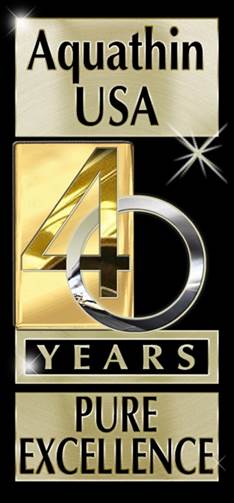Forgotten landfills could be tainting North Carolina groundwater
"Aquathin OP-ED Commentary"
I recall reading that of all the landfills created in the last 10 years, less than 1% have a liner suitable to prevent leachate (toxic soup created by rain and decomposing garbage
which includes batteries, paint, diapers, etc)contamination of groundwater supplies. By the way, the liners are only good for about 100 years. North Carolina has boldly
stepped forward and publicized their tragedy, but make no mistake, the same exists in every state and country.
One personal note: you will not believe the comments from a college professor. With people like this in positions of monitoring our welfare, you can be sure that we all
are in trouble, and that action must be taken by each and everyone of us to protect our families. Thank you Aquathin!!!!
Forgotten landfills could be tainting North Carolina groundwater
RALEIGH, N.C. -- More than 770 closed landfills dot North Carolina, and most of them are invisibly polluting groundwater, a state official says.
The state is cataloguing the sites, which include 70 in the Charlotte region, but has no money to learn whether neighbors are drinking
contaminated water, much less clean them up.
"We have very little information on them. In fact, we haven't located a lot of them," said Charlotte Jesneck, who heads the Inactive Hazardous Sites Branch.
"Based on individual evidence, based on other states' experience, you can conclude that very likely we're going to have a lot of groundwater contamination."
Town dumps, industrial disposal sites, and private landfills that opened before about 1970 faced none of the litany of environmental safeguards now required, including
liners and systems to collect water that filters through decomposing debris. Unchecked, this leachate can pollute groundwater.
Those dumps accepted a wide range of material, from old newspapers and kitchen scraps to used motor oil, paint, and chemicals.
"You can find contamination at all of these sites," said Arthur Mouberry, the state's groundwater section chief. The size of the landfill and how close it is to houses that
depend on well water determines how much of a potential threat it poses, he said.
Contamination from landfills can be so severe that they end up on the National Priorities List, also known as Superfund. The list is a catalogue of cleanup sites that
pose the greatest threats to public health and the environment. The only Carolinas landfill listed is in Lexington County, S.C.
Landfills are officially blamed for 58 N.C. groundwater contamination sites, but Mouberry said that number doesn't reflect the true extent of contamination.
He said he's pressing solid waste officials to add more landfills to the state's database of 14,000 groundwater sites, which is published on a state
Web site under "databases" at http://gw.ehnr.state.nc.us/ as a way of warning neighbors of potential contamination.
The Harnett County dump where Mouberry hauled trash as a boy is now covered in 20-foot pines.
"You look at it, and you'd never know," he said.
Most of the old municipal landfills were filled with organic material that degraded within a few years, leaving a core of material whose decomposition
has virtually stopped, said Bob Borden, a civil engineering professor at N.C. State University who has monitored groundwater at Wake County landfills.
What's left, he said, may be buried tree stumps and the like. Water leaching through that sort of debris may be discolored by tannins,
such as swampwater, but not particularly hazardous.
"I'm not saying I'd want to drink it, but putting your hand in it surely wouldn't hurt," he said.
Leaking underground storage tanks make up most of the N.C. groundwater cases. Unlike leaking tanks, which can be dug up and removed,
polluted groundwater at landfills would have to be treated in place, Mouberry said. The process can take years.
All N.C. landfills operating after January 1998 had to have liners to keep contamination from reaching groundwater.
Jesneck supervises a staff of five who ride herd on 2,000 hazardous sites, including the landfills. A state cleanup fund of about $3.5 million
has no ongoing source of funding. No records exist to show exact locations for about two-thirds of the 776 old landfills that
had been catalogued by mid-January, Jesneck said. Groundwater hasn't been tested around most of the sites, she said.
The list of old landfills includes some opened as long ago as the 1940s and are now called "orphan" sites because no one still living is
responsible for their cleanup. "It's going to be hard, especially in these real old locations, to determine liability or even
find anybody who knows anything about them," Jesneck said. Two companies are now under contract with the state to locate the old landfills.
"That's the best protection you can give people -- get it on the public record," Jesneck said. "The rest of the things, we'll do if resources permit."
FOR THE BEST TASTE IN LIFE
Think Aquathin..AquathinK !!
Edited from Tech Bank 4/13/01


